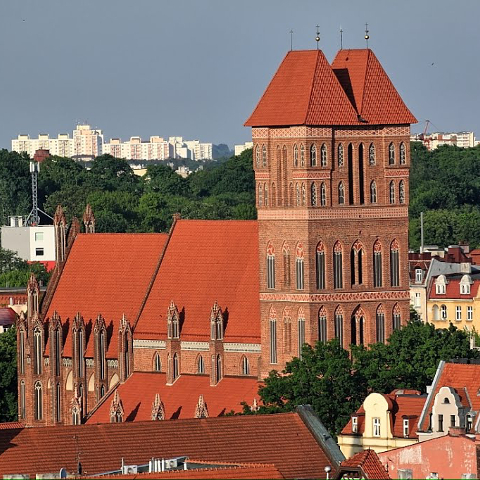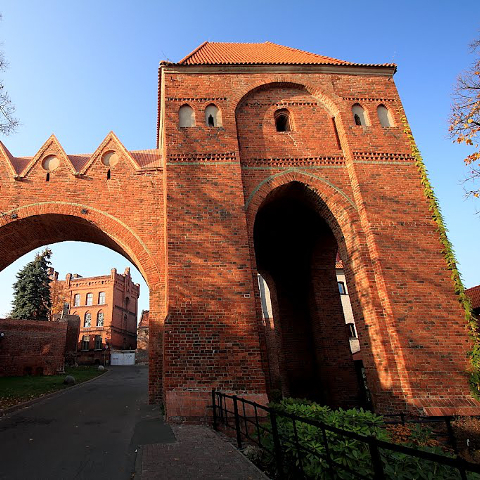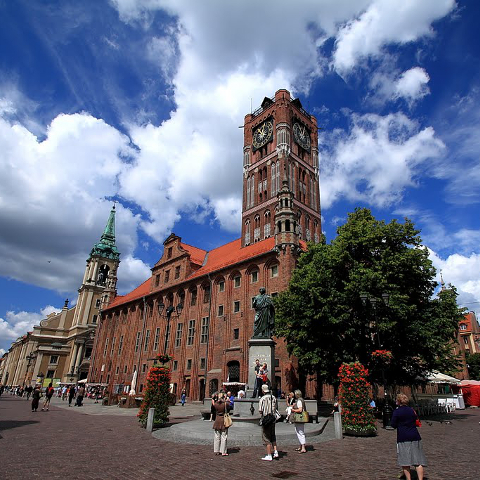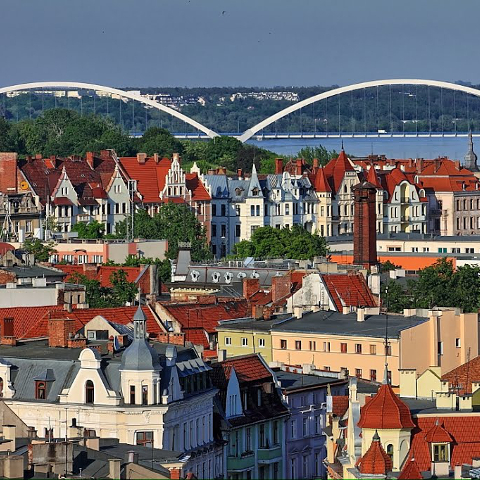Composers / Fryderyk Chopin / Places catalog
Toruń
In 1231, the Teutonic Knights, under the leadership of Hermann von Balk, built a defensive settlement, from where they subjugated Prussian tribes. Two years later, Toruń was granted a municipal charter (together with neighbouring Chełmno). That makes it one of Poland’s oldest cities.
The Congress of Vienna (1815) that followed the defeat of Napoleon decided that the city would be part of Prussia, as it had been after the Second Partition of Poland (1793). The new rulers embarked on a massive rebuilding programme that would transform Toruń into a border fortress. This considerably hampered urban development.
There were quite a few people from Toruń in Chopin’s life. The owner of Żelazowa Wola, Ludwika Fenger (later Skarbek), came from Toruń, as did her son (and Chopin’s godfather) Fryderyk Skarbek (1792–1866). Samuel Bogumił Linde, the rector of the Warsaw Lyceum, which Chopin attended, was also born in the city.
Chopin spent his 1824 and 1825 school holidays in Szafarnia, some 40 km from Toruń. Although he is known to have visited Toruń several times, only one written account has survived. When in Toruń, Chopin stayed at the Fengers’ townhouse at ul. Mostowa 14, which belonged to the Skarbek family. In its day, that building, erected in 1742, was one of the city’s most impressive residences.
In 1825, Toruń had a population of around 10,000. Although these were not exactly the city’s halcyon days, it made a great impression on Chopin. He thought that nothing compared with Toruń’s gingerbread cakes and wrote as much to Jan Matuszyński: ‘I will write to you only that the gingerbreads made the greatest impressio upon me’.
Chopin saw the imposing buildings of this fortified city, which had its origins in the Middle Ages. He would have seen a machine that was probably dredging the Vistula, as well as the Cathedral Basilica of SS John the Baptist and John the Evangelist (from the tower hangs Tuba Dei, cast in 1500, the second-largest mediaeval bell in Poland). The Gothic town hall, built at the end of the fourteenth century, made a really strong impression. Chopin mentioned the legend about the building being modelled on the calendar, i.e. its single tower symbolised one year, its four gates the four seasons, its twelve large halls the months of the year and every window a day of the year. Legend has it that the townspeople put an extra window in the building every leap year to keep it in line with the calendar.
The fifteen-metre-high Leaning Tower of Toruń that Chopin mentions is definitely one of the architectural attractions of the city. It was perpendicular when it was built in the latter half of the thirteenth century and has only leaned over with time. In 2007, the top of the tower was 146 cm off the vertical.
Chopin also visited the house then considered to be the birthplace of the great astronomer Copernicus, at what is now ul. Kopernika 40. Chopin’s description in his letter to Matuszyński is worth quoting in full: ‘Imagine, Dear Jaś, in that corner, in that room, where that famous astronomer received the gift of life, there now stands the bed of some German, who doubtless, having eaten his fill of potatoes, often releases into the air rather frequently repeated zephyrs, and over those bricks, of which one was sent to Puławy with great ceremony, more than a few little bedbugs crawl. That’s how it is, my brother! The German pays no heed to who lived in this house; he allows himself to do on the entire wall what Princess Czartoryska would not do on one tiny brick’.
Copernicus is now generally believed to have been born in the house at ul. Kopernika 15–17, although the most recent research suggests that his birthplace might have been the building at Rynek Staromiejski 36, where his father also had a home.
-

Church of St. Jacob. Phot. Andrzej Maćkiewicz.
-

Dansker. Phot. Andrzej Maćkiewicz.
-

Old town hall at market square. Phot. Andrzej Maćkiewicz.
-

View of Toruń. Phot. Andrzej Maćkiewicz.